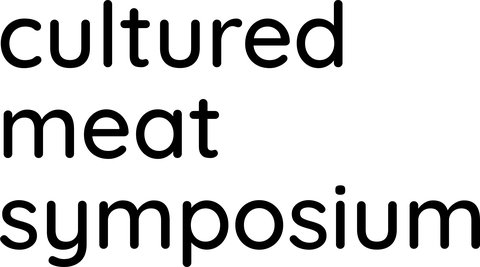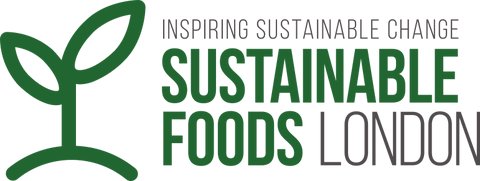The Case for Cultured Meat Has Changed
April 22, 2025 - 12 min read

Featured
Opinion
A new wave of cultured meat startups is doing what techno-economic models said couldn’t be done
When the world’s first cell-cultured beef burger debuted in 2013 with an R&D price tag of €250,000, it immediately prompted questions about whether the technology could ever become affordable. In the years that followed—even as cultured meat products began selling commercially in several countries—those questions often persisted.
The technical challenges facing the cultured meat industry are undeniably steep—perhaps matched only by its ambition to reengineer some of the foundations of modern food production. That ambition has drawn a growing community of scientists and engineers who are tackling these hurdles through rigorous experimentation and constructive inquiry. Yet alongside this work, some doubts have echoed a familiar dismissiveness—reminiscent of criticisms once directed at solar energy, electric vehicles, and other technologies that ultimately proved their viability at scale.
One of the most comprehensive critiques of cultured meat’s economic viability to date came in 2021 from David Humbird, a private engineering process consultant commissioned by the nonprofit Open Philanthropy Project. In a roughly 100-page techno-economic analysis, Humbird laid out a detailed case for why he believed scaled production would remain prohibitively expensive. His central conclusion was that cell culture media—the primary cost driver—could not realistically fall below $1 per liter, making it effectively impossible for total production costs to drop below $16 per kilogram. The analysis projected that, at scale, media costs would likely be around $6.50 per liter, and in the most optimistic scenario, $2.50 per liter—with total production costs starting at no less than $21 per kilogram.
Not long after Humbird’s analysis was published, independent news outlet The Counter (now part of Grist) ran a long-form feature that echoed many of the report’s key assumptions and conclusions. Together, the two pieces helped catalyze a wave of heightened skepticism, with their central arguments reiterated and amplified in mainstream outlets including Bloomberg and The Wall Street Journal.
the projections put forward by Humbird and peers have proven spectacularly wrong.
Cultured Meat’s Quiet Breakthrough
While it may take years—or even decades—to fully understand how the cultured meat industry will scale, one thing is already clear: the projections put forward by Humbird and peers have proven spectacularly wrong. In the short time since the TEA was published, multiple companies have achieved results that exceed its assumptions by wide margins—across media cost, cell density, and overall production efficiency. And they’ve done so without meaningful government support or the benefit of scale—factors that historically accelerated progress in adjacent sectors like solar energy and electric vehicles.
Media Costs Are Already 10–30x Lower Than the Humbird TEA Projected
Less than four years after the publication of the Humbird TEA and its surrounding media coverage, multiple companies are producing cell mass using culture media that costs $1 per liter or less—sharply undercutting Humbird’s projected minimum of $2.50 per liter. Several companies have achieved media costs below $0.50 per liter, placing current performance at 10 to 30 times lower than what the TEA deemed possible, even in its most optimistic scenarios.
Cell Densities Have Already Surpassed the TEA’s Assumed Ceiling
The Humbird TEA projected that maximum achievable cell densities in air-sparged fed-batch systems would top out at 60 grams per liter (assuming 15 million cells/mL with 20 micron diameter cells). Yet several leading cultured meat companies have already demonstrated sustained cell densities between 60 and 90 grams per liter—representing gains of up to 50 percent beyond the TEA’s upper bound. These results not only expand the achievable yield per bioreactor volume, but also contribute significantly to lowering unit production costs.
Production Costs Are Already Well Below TEA Estimates
The combination of lower media costs and higher cell densities has translated into dramatically reduced production costs. Several cultured meat companies are now producing cell mass at $10 to $15 per kilogram—already 30 to 50 percent below the TEA’s projected minimum of $21 per kilogram. A handful of leading-edge firms have gone further, achieving costs below $10 per kilogram. All of these figures—along with reported media costs and cell densities—have been independently vetted by Lever VC across numerous companies in the industry.
Costs Are Poised to Fall Further
Perhaps more striking than the pace of cost reductions is that they’ve occurred at such an early stage in the technology’s development. With minimal scale and limited external support, companies have nonetheless laid the groundwork for continued progress. Across the sector, firms are now deploying a range of strategies to drive costs even lower:
- Hybrid products that combine cultured meat with plant-based components, reducing the amount of cell mass required while maintaining the desired taste and texture.
- Undifferentiated cell mass in place of fully structured tissue, simplifying production and reducing costs.
- In-house production of growth factors to eliminate pharmaceutical markups and improve quality control.
- Improved bioreactor systems—including perfusion and continuous production models—that increase yields while reducing capital requirements.
Rather than asking how to replicate meat in its entirety, they are asking what minimum viable form can succeed in the market.
Reducing Operating Expenses: Cultured Meat’s New Playbook
Second-generation cultured meat companies are approaching the category with a sharper focus on cost and commercial viability. In contrast to the sector’s earlier ambitions of producing fully bioidentical meat, many of today’s startups are developing more pragmatic processes designed to minimize cost, complexity, and risk—while still delivering meaningful product value. Rather than asking how to replicate meat in its entirety, they are asking what minimum viable form can succeed in the market. At the same time, technical methods first demonstrated in academic settings more than a decade ago are now more accessible, allowing younger companies to apply proven science to reduce operating costs.
Low Inclusion Ratios
The first cost-effective cultured meat products to reach market are likely to be in hybrid formats that combine plant-based ingredients with small amounts of cultured cell mass. To optimize these formulations, companies are increasingly focused on identifying the minimum level of biological mimicry required to achieve the desired organoleptic profile. Some have already demonstrated significant improvements in flavor, texture, and appearance by incorporating cultured cell mass at inclusion rates as low as a few tenths of a percent.
A related strategy is to reduce the number of cell types used in production—eliminating, for instance, the need for adipocytes by substituting precision-fermented fats or functionally modified plant oils. Simplifying cellular composition in this way can substantially lower both cost and process complexity.
Undifferentiated Cell Mass
Animal tissue is structurally and compositionally complex, reflecting the demands of its physiological function. Cultured meat, by contrast, is not required to perform biological functions—only to deliver the sensory experience consumers expect. As a result, many commercially focused companies are moving away from fully differentiated cell products and toward undifferentiated or minimally differentiated cell mass.
Because undifferentiated cell mass lacks an extracellular matrix, muscle fibers, and other organoleptically important features of mature tissue, it integrates especially well into hybrid products—where a plant-based matrix can replicate the structure and texture of whole muscle. In these contexts, the cell mass contributes primarily to flavor, and in some cases enhances mouthfeel and binding properties.
Eliminating the need for cellular differentiation improves productivity, shortens production timelines, and reduces overall complexity, risk, and cost. Taken together, these shifts reflect a broader transition: from a phase of technical exploration to one of pragmatic scale-up, where cost efficiency and manufacturability are becoming the industry’s dominant priorities.
Directed Evolution
Despite rapid advances in tools for genetic modification, identifying which targets to modify—and in what combinations—remains a complex and unresolved challenge. As high-throughput screening technologies become more efficient and accessible, directed evolution is emerging as a compelling alternative for achieving desired phenotypes, particularly when genotype-to-phenotype relationships are unknown.
Even with relatively basic screening methods, several cultured meat companies have already demonstrated valuable traits such as spontaneous immortalization, adaptation to suspension culture, and tolerance to low-cost media containing reduced concentrations and varieties of growth factors. These attributes significantly reduce both operating expenses and capital requirements, improving scalability across multiple dimensions. In some cases, just weeks or months of selection and screening may be enough to achieve a meaningful gain in a single trait.
Protein Engineering
Protein engineering applied to growth factors can significantly improve both potency and stability, allowing for lower concentrations to achieve the same biological effect. Potency is typically enhanced by improving how well the growth factor’s active domain fits its corresponding cell surface receptor. Additional modifications can increase thermal stability, enabling the protein to remain functional under the temperature and duration conditions of bioreactor runs, thereby maintaining activity over longer periods.
Although these techniques require specialized expertise, they can yield substantial reductions in growth factor usage. Because the molecular forces involved are highly sensitive to distance, even small improvements in receptor binding can lead to outsized gains in performance.
Optimized Recombinant Growth Factor Production
Microorganisms are inexpensive to culture, readily proliferating on basic nutrient inputs and standard equipment. At the same time, growth factors are needed only in trace quantities, reducing the pressure for breakthrough titers—unlike in precision fermentation of high-volume, low-value commodities. Advances in synthetic biology have made recombinant protein expression broadly accessible, allowing companies to reach sufficient titers with relatively modest effort.
In-house production also eliminates third-party markups, which can be substantial due to pricing models inherited from the pharmaceutical sector. While purification remains the costliest step, cultured meat applications do not require pharmaceutical-grade purity. Lower-specification or reusable purification components—such as chromatography columns—are often adequate. This approach enables the production of ultra-low-cost media with minimal resource demands.
constructing a 10 kTA facility using off-the-shelf pharmaceutical-grade bioreactors and ancillary equipment would still require hundreds of millions of dollars.
Reducing CapEx for Commercial-Scale Production
With leading companies in the cultured meat sector now achieving low media costs and clear pathways to reduced operating expenses, capital expenditure (CapEx) remains the primary barrier to scaling production. While amortized CapEx may not dominate unit economics, constructing a 10 kTA facility using off-the-shelf pharmaceutical-grade bioreactors and ancillary equipment would still require hundreds of millions of dollars. As a result, companies across the industry are developing a range of strategies to lower capital requirements and accelerate scale-up.
Continuous Culture as a Yield Multiplier
Continuous production is one strategy for reducing CapEx by increasing meat yield per unit of reactor volume—without requiring higher cell densities or major equipment changes. Rather than expanding seed trains across multiple orders of magnitude in cell density, continuous systems maintain the reactor at its final expansion stage in a steady state, allowing for extended run times through continuous harvesting and feeding. This approach can increase cell mass yield by up to fourfold per reactor volume, and in some high-performance systems, by as much as tenfold.
The primary drawback of continuous production is the complexity of execution. Maintaining a high-performance continuous run requires advanced in-line monitoring systems to manage dynamic bioprocess conditions—particularly feeding and harvesting regimes. Fewer media replenishments over longer periods can create favorable conditions for opportunistic contamination, increasing both the risk of microbial intrusion and the potential for product loss. As a result, a growing number of companies are adopting fed-batch systems, which offer a practical compromise between batch and fully continuous production. Only a small number of players are currently operating continuous processes at the lab scale or working to demonstrate them at pilot scale.
Perfusion Reactors and the Path to Higher Densities
Another strategy for increasing meat yield per unit volume—without changing the production mode—is to raise cell density. While several approaches have been proposed, including novel media formulations and mechanical interventions, perfusion reactors remain the most robust and promising. These systems rely on some form of cell retention to enable continuous media exchange within the culture. This process increases dissolved oxygen and mass transport (e.g., nutrient delivery), while simultaneously removing waste products. The result is a more favorable environment for cell proliferation, enabling cultures to reach substantially higher densities.
In static cultures, cells can adhere to a matrix and to one another, allowing tissue to mature. This process involves extracellular matrix production, cell swelling, and the fusion of muscle cells into long fibers. Maturation of this kind can significantly improve biomass yield in ways that are less dependent on continued proliferation. Perfusion reactors can achieve significantly higher cell densities compared to traditional systems, and this advantage can be further enhanced by incorporating static culture elements in high-performance bioprocesses. When perfusion reactor designs support static culture regimes, they also open the door to producing structured meat products.
The primary drawback of perfusion systems is the lack of commercially available hardware and limited practicality at industrial scale. External cell retention devices offer a lower-risk option and can be implemented using pharmaceutical-grade components, but they are expensive, difficult to scale, and incompatible with static culture. As a result, a number of companies are now engineering their own systems—either by modifying existing stirred-tank platforms or developing entirely new designs. The risk and scalability of these approaches hinge heavily on the strength of their underlying engineering.
Redesigning Bioreactors for Cost Efficiency
Another promising strategy for reducing CapEx is adapting pharmaceutical-grade reactor designs for food-grade applications—primarily by replacing high-grade stainless steel with lower-cost alloys or durable non-metallic materials such as industrial polymers. To remain viable at scale, this approach requires alternative solutions for clean-in-place and sterilization-in-place systems, along with a reliable manufacturing pipeline for the modified equipment. A small number of companies are currently exploring this strategy and working to demonstrate proof of concept at commercial scales.
Reducing non-reactor CapEx will also be critical. Even if the cost of the reactor itself is reduced by an order of magnitude, reactors typically account for only 30–40% of total facility costs. Storage tanks, media tanks, and ancillary systems would also need to be—and feasibly can be—manufactured from lower-cost materials.
The speed and scale of these gains reaffirm the potential of cultured meat as a transformative platform for food production.
Delivering on the Promise of Cultured Meat
In just four years, leading companies in the cultured meat sector have driven core production costs dramatically below what the Humbird TEA—and its surrounding media coverage—deemed possible. Notable achievements include:
- Media Costs: Companies have reduced media costs to $1 per liter or less, translating to well under $8 per kilogram in contribution to cell mass—surpassing the TEA’s long-term projections by an order of magnitude.
- Cell Density: Sustained cell densities of 60–90 g/L have been demonstrated, significantly exceeding the TEA’s projected ceiling of 60 g/L and proportionally increasing volumetric yield.
- CapEx: Expected capital expenditure has been reduced by nearly an order of magnitude as companies innovate around bioreactor design—particularly by avoiding reliance on pharmaceutical-grade hardware.
While performance varies across the sector, the trajectory is clear: the most advanced players are rapidly outpacing early cost forecasts. The speed and scale of these gains reaffirm the potential of cultured meat as a transformative platform for food production. Delivering on that promise, however, will require sustained innovation, coordinated investment, and sharp focus on cost efficiency and scalable design.
This article was adapted for Protein Report from content originally published in the Lever VC insight paper, “[A Second Generation of Cultivated Meat Companies Breaks Through Projected Cost Barriers]https://www.levervc.com/wp-content/uploads/2025/04/Lever-VC-A-Second-Generation-of-Cultivated-Meat-Companies-Breaks-Through-Projected-Cost-Barriers-4.pdf).” It has been edited for style and formatted for the web.

















